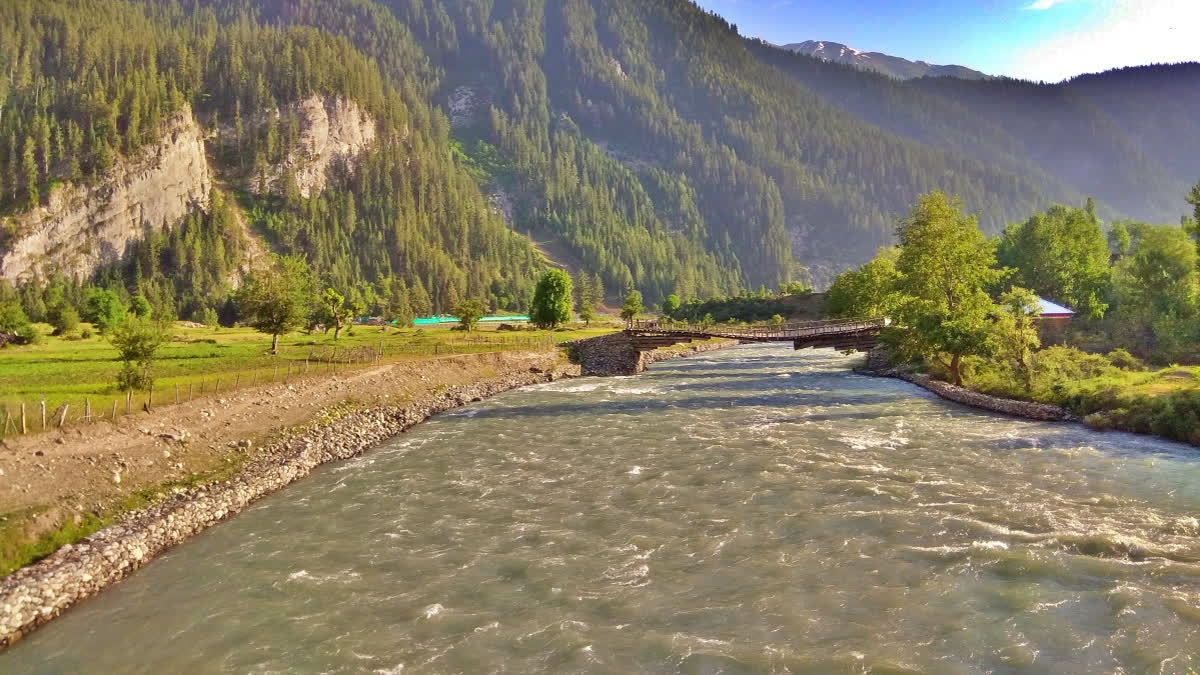New Delhi: The visit by a three-member delegation from Pakistan to inspect hydroelectric projects in Jammu and Kashmir falling under the Indus Waters Treaty (IWT) should not be seen as something unusual.
Though some media reports are highlighting that the visit comes five years after the revocation of special status to Jammu and Kashmir by New Delhi, one should see it from the perspective of the IWT that has withstood the test of time over seven decades despite the tumultuous relationship between India and Pakistan.
“The visit is a normal exchange,” Uttam Kumar Sinha, Senior Fellow at the Manohar Parrikar Institute of Defence Studies and Analyses and a leading commentator on trans-boundary water issues, told ETV Bharat. “The Permanent Indus Commission (PIC) meets once every year. India has been very transparent on the IWT.”
Describing the IWT as a “remarkable treaty”, Sinha said: “That the Treaty has lived is because India respects being its signatory and values trans-boundary rivers as an important connector in the region both in terms of diplomacy and economic prosperity. There have been several occasions – the three wars, the Indian Parliament attack in 2001, the Mumbai terror attack in 2008, the terrorist attacks in Uri in 2016 and the 2019 Pulwama attack - which could have prompted India, within certain conditions, to contemplate withdrawing from the IWT. However, on each occasion, based on its cost-benefit assessments, India chose not to.”
During its current visit, the Pakistani delegation will inspect the Kishenganga and the Ralte hydroelectric projects in the Chenab valley. In January 2019, a Pakistani delegation had inspected the Pakal Dul and Lower Kalnai hydroelectric projects.
So, what are the IWT and the PIC under it?
The IWT is a water distribution treaty between India and Pakistan, arranged and negotiated by the World Bank, to use the water available in the Indus River and its tributaries. It was signed in Karachi in September 1960 by then Indian Prime Minister Jawaharlal Nehru and then Pakistani President Ayub Khan.
The Treaty gives control over the waters of the three “eastern rivers” – the Beas, Ravi and Sutlej – to India, while control over the waters of the three “western rivers” – the Indus, Chenab and Jhelum – is with Pakistan. The treaty establishes a cooperative mechanism for exchanging information between the two countries regarding the use of the western rivers allocated to Pakistan and the eastern rivers allocated to India.
The preamble of the treaty recognises the rights and obligations of each country in the optimum use of water from the Indus system in a spirit of goodwill, friendship and cooperation. The treaty allows India to use the western river waters for limited irrigation use and unlimited non-consumptive use such as power generation, navigation, floating of property, and fish culture.
Under the Treaty, a Permanent Indus Commission (PIC) was established. The Commission has a commissioner from each country to oversee the cooperative mechanism.
The Commission is required to meet at least once a year to discuss the implementation of the treaty and address any issues that arise. The PIC conducts regular inspections and tours of the rivers and works to monitor compliance and resolve minor issues on the spot. It oversees the exchange of river flow and hydrological data between the two countries, ensuring transparency and adherence to treaty provisions. The Commission serves as the first line of dispute resolution, aiming to settle differences through direct dialogue. If issues cannot be resolved, they may be referred to a neutral expert or a court of arbitration.
